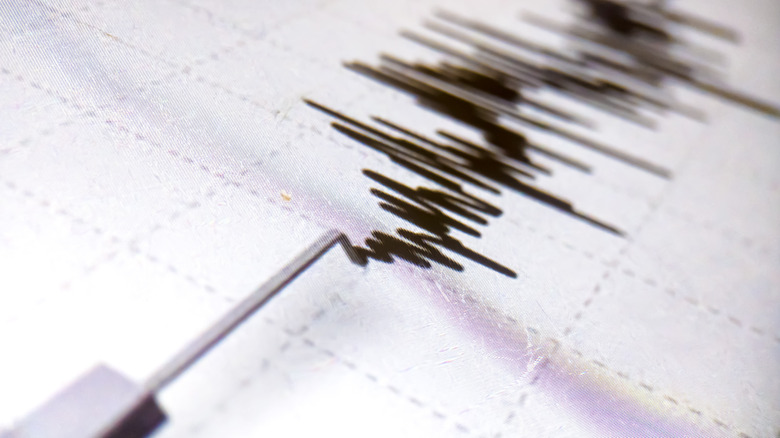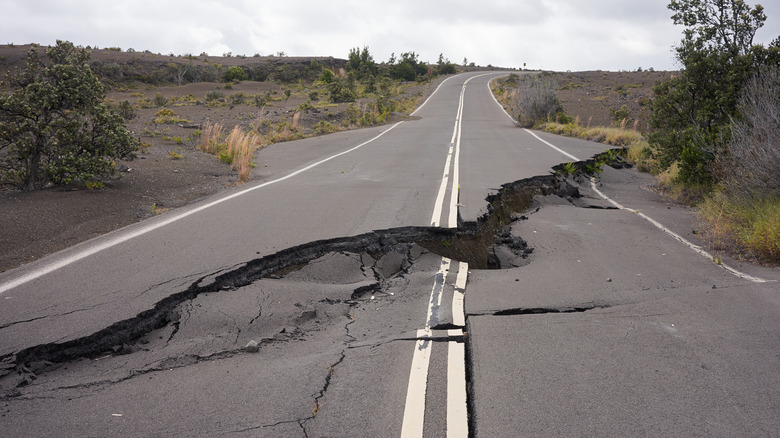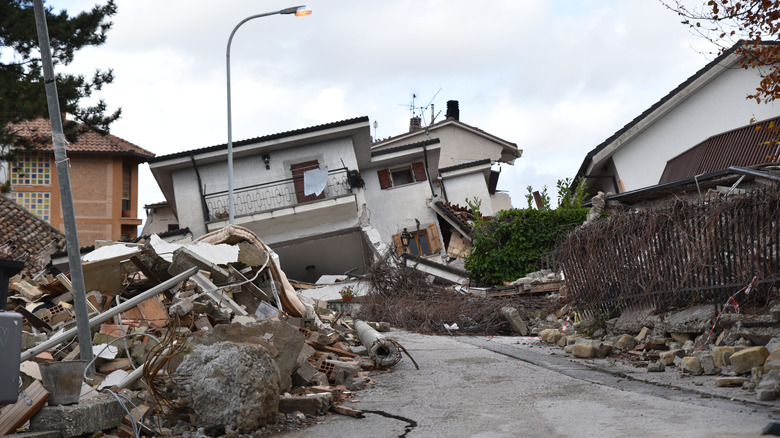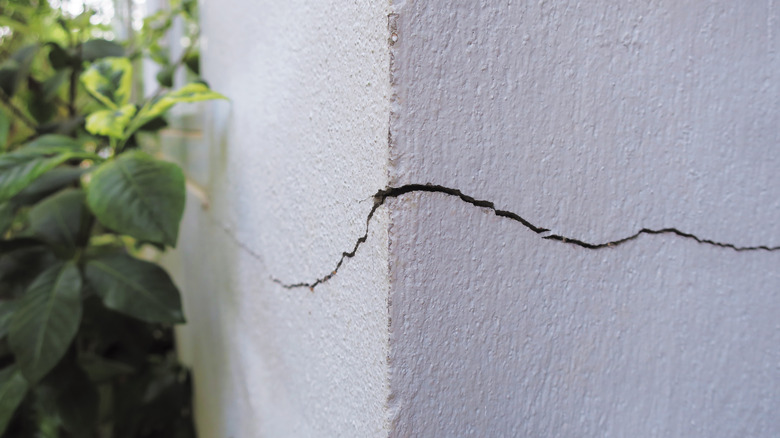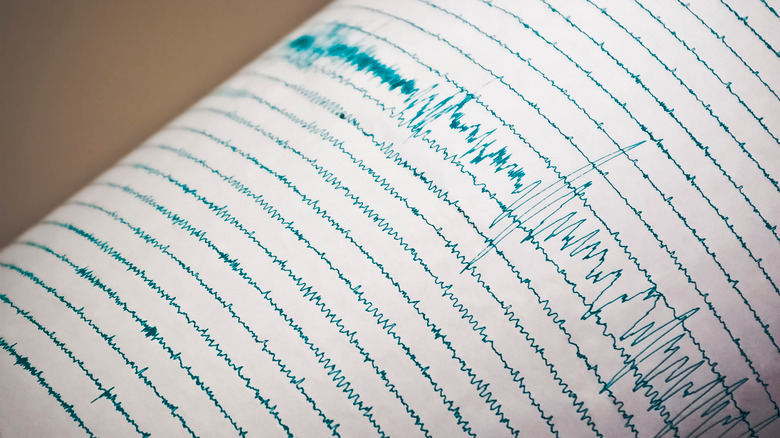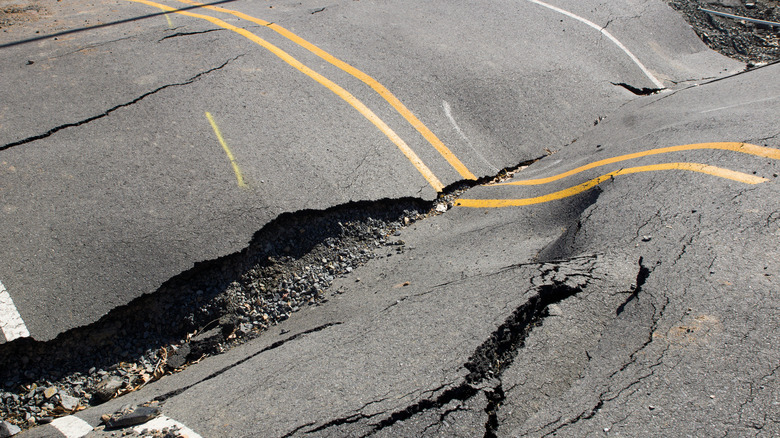Can Earthquakes Be Predicted?
Natural disasters are a part of life on Earth. Although they can be huge and devastating, there are plenty of ways humans have learned to prepare for them. You might have participated in a tornado drill at least once before, or at least kept an eye on your phone for updates during severe weather. And everyone has seen hurricane forecasts on the news as experts track tropical storms headed toward land.
But there are some natural disasters that are much harder to prepare for. Forest fires and tsunamis happen quickly, sometimes without warning. Earthquakes have devastated entire cities and killed millions of people. Being able to predict earthquakes could be life-saving in areas like California, where scientists expect a giant tectonic event to occur sometime in the next few decades. But as Mental Floss reports, many experts say that while they can make educated guesses as to where an earthquake might happen, it isn't possible to know when it's coming until it's already underway.
How do earthquakes work?
The Earth seems pretty solid from where we live. The ground underneath you is just dirt and rocks with the occasional fossil, at least as far down as we can dig. But the planet is actually way more complicated than that. Beneath the ground we live on is a series of layers that range from solid rock to liquid, molten metal, according to the Australian Academy of Science. It's those molten layers that are responsible in part for earthquakes.
The solid ground of the upper crust moves around on top of the molten metals, according to the Australian Academy of Science. That crust is broken up into pieces called plates. As the plates move around over the course of many years, they can interact in a few different ways. That includes bumping together to make things like mountain ranges, slipping over or under each other, or moving apart and letting that molten layer through to create new crust, according to the Academy. While earthquakes might seem random, they tend to occur around areas where these plates meet. There's even evidence that these kinds of quakes have occurred on other planets.
Easing the friction
Earthquakes are more common than you might think. The U.S. Geological Survey says as many as several thousand earthquakes take place somewhere on Earth every single day. Most of them are so small that it's possible no one will even notice. Current research suggests that the earthquakes are because tectonic plates catch against each other as they move, according to Mental Floss, and those areas build up a lot of stress as they try to keep moving.
Some of that stress is released in smaller tremors. The difficulty is in knowing when it will build up to be something bigger, when a massive earthquake will strike nearby. According to U.S. Geological Survey Earthquake Hazards Program's Michael Blanpied, there's not a lot of warning for these tremors, regardless of their size. "If there is a process that occurs in the seconds — minutes, hours, months? — before an earthquake, that process may be very subtle and hard to observe through miles of solid rock, especially when we don't even know where to look," Blanpied told Mental Floss.
The difference between predictions and forecasts
You've probably heard that California is expected to have a huge earthquake sometime soon. That might make it sound like scientists do have a method for predicting them, but that's not exactly accurate. According to the U.S. Geological Survey, a prediction requires a few specific things. You have to be able to point out the exact location of the earthquake, the date and time it will occur, and how big it's going to be. Because no one can actually go down beneath the Earth's crust and see what's happening, USGS says, you can't determine all three of those things.
Instead, says World Atlas, experts focus on forecasts and probability. Those are less specific than a prediction, and usually concentrate on existing fault lines and the history of the area (via U.S. Geological Survey). Scientists know to expect a huge earthquake in California sometime soon because of multiple fault lines in the area that have been active in the past, according to the California Department of Conservation. But those forecasts don't specify exactly where, a date, or a time — only that it's expected sometime in the next 30 years or so. That lack of specificity means that, technically, there isn't an exact prediction.
Making educated guesses
There are a few different methods that can be used to anticipate an earthquake. According to World Atlas, sometimes cracks in the Earth's surface will show up before a full earthquake hits. Those cracks can create a pathway for things like groundwater and gasses to flow up and out into the open. Sometimes there are changes in animal behavior or the electromagnetic field, according to World Atlas, and looking for these changes can indicate a potential earthquake is on the way.
But none of these methods are foolproof. While the U.S. Geological Survey reports that an estimate made decades ago in China based on smaller tremors and animal behavior did end up anticipating an earthquake, there are plenty of instances where those kinds of indicators didn't lead to anything. The best scientists can do is rely on current understandings of active fault lines to know which areas are most likely to experience events, according to World Atlas, and make long-term forecasts based on that.
Anticipating the worst
Because the science of earthquake probability isn't very exact, countries and cities near fault lines have to expect the worst. Scientists know, for example, that some faults will likely have a severe earthquake at some point within a century, according to World Atlas. So if a city wants its buildings and infrastructure to withstand the test of time, developers have to build with that in mind. Specifications are available (per Earthquakes Canada) to help architects and engineers create designs that can outlast an earthquake, whenever it might happen.
Earthquakes don't just affect the buildings and infrastructure. They can also lead to the deaths of millions of people. If the buildings are safe and sturdy, and if everyone has been trained on what to do when an earthquake hits (as explained at The Great California Shakeout), that can help to protect people. But it's impossible to know when an earthquake is going to strike, and to what magnitude it will grow (via OpenMind).
